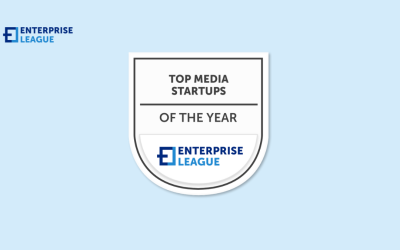As you start your real estate journey, it’s important to grasp how property parcel maps and title insurance work together to safeguard your investment.

10 best marketing tools for startups (free and paid)
Every startup wants to grow, and marketing is an integral part of that growth. Using the most popular marketing tools for startups you can take your business to the next level. Every startup wants to increase its visibility, generate more leads and profit. The right combination of tools could speed up the growth process, and improve your overall marketing strategy. Whether analytics or design, only a comprehensive selection of tools can turn your startup into a fully successful business.
10 best marketing tools for startups looking for grow in 2022
When launching a new product, company or idea you need a toolbox of the best marketing tools. We’ll walk you through the best marketing tools for startups–and don’t worry, most of them are free or low cost. As for the paid ones, they’re priced to help fledgling startups without deep pockets.
Google Analytics
Google Analytics is the most widely used tool for analytics. It allows users to track website performance, collect visitor insights, determine sources of user traffic, compute the success of marketing campaigns, as well as to obtain demographic user information. A very unique aspect of this tool is the conversion reporting function. Namely, you can identify the exact path a user takes before purchasing your product or service. That way you can better understand the user journey and later tailor and improve the user experience. By analyzing customer behavior, all startups can develop a unique marketing campaign and increase website visitors and customers. Although it is for free for anyone with a Google account, it also offers a paid version of $12,500 per month or $150,000 per year.
Segment
Segment is another great tool for analytics. The data you collect from other platforms can be aggregated into Segment and then be used by hundreds of other tools for marketing, analytics and data warehousing. Segment is perfect for those businesses that are sending data to several databases and integrating with lots of different marketing tools for startups. The free version of Segment includes up to 1,000 Monthly Tracked Users (MTUs), where paid plans start at $120 per month for 10,000 MTUs.
Mixpanel
Mixpanel is a granular data collection tool that allows you to analyze each customer interaction across the entire user journey. The tool evaluates 67 billion actions and presents the data to the users in a clear easy-to-understand format. It is an event centric analytic program where you don’t record the user pageviews and clicks, but it also serves as a platform which tracks events. Mixpanel is mostly free, including up to 5 million data points per month with limited features. The paid plan starts at $99 per month for 10 million data points per month with full features.
Monday.com
CIENCE
CIENCE is a widely used lead generation tool. They build highly targeted campaigns, which in turn generates businesses more targeted leads. CIENCE offers the quickest, most-targeted path to market using their so called Orchestrated Outbound program to deliver qualified sales opportunities. The Orchestrated Outbound program relies on AI-enabled research, multi-channel outreach, and proprietary software platform to start sales conversations with any customer. When it comes to pricing, they say they are “Less expensive than an empty pipeline”. They offer several packages whose price depends on the customer’s needs.
Canva
For many designers Canva is indispensable. It makes sense that the most popular design tool on the internet has perfectly designed services. Its platform provides a simple online interface that generates images, media content, printed brochures, websites, product mockups, business cards, online display ads and more. Due to its extensive use, no wonder Canva is considered one of the best marketing tools for startups. Part of Canva’s popularity is due to its accessibility, as it is essentially free, whereas paid plans start at $12.95 per month.
Placelt
Essentially a design template website that uploads new designs and mockups every day making them the largest depository of design templates online. Make use of their templates and services to create branded images or videos that fit your exact industry needs. Placelt is perfect for business owners, marketing teams, and especially startups. While mostly free like their range of free tools, the video and image croppers, and the video to gif converter, it offers paid plans starting at $14.95 per month per user.
Google Search Console
Google’s very own Search Console is one of the most effective SEO optimization tools on the internet. It can be used for at least two purposes: it helps you measure your site’s search traffic and performance, and it makes your site stand out in Google Search results. It really helps you discover which queries bring users to your site, by analyzing your site’s impressions, clicks, and position on Google Search. The best thing is that Google Search Console is completely free, and it doesn’t include any paid plans.
Keyword Tool
Keyword Tool allows its user to find complementary keywords using Google’s autocomplete engine. It can be used as an alternative to Google keyword research — capable of building 750+ long-tail keyword combinations with the free version. Although not considered one of the most popular marketing tools for startups, it can still add the extra boost to your marketing strategy. The Keyword tool is for Free, and pro plans start at $88 per month for advanced features and granular data.
SEMRUSH
SEMRUSH is a self-named “all-in-one digital marketing tool”, a comprehensive workflow tool for SEO. Beside the usual SEO tools other platforms offer, SEMRUSH offers auditing your SEO performance, tracking positions for keywords, generating ideas for traffic, as well as monitoring competitors. SEMRUSH also offers analytics for paid online campaigns and social media, however their strongest offering is the organic analytics component. There is a limited free version of the platform, but most paid plans start at $100 per month.
Conclusion
It can be tough taking a startup to the next level. There are a lot of factors to consider when building a successful marketing strategy and using effective marketing tools for startups is a big part of it. Using the best marketing tools can help you optimize your business, increase its visibility, bring it closer to your target market and customers and most importantly increase your profit.
More must-read stories from Enterprise League:
-
- The importance of customer-focused strategy for your business.
- Find out what are the powers of female entrepreneurs.
- A few tricks up your sleeve when dealing with clients who refuse to pay.
- Are you aware of the negative effects that social media has on the workspace?
- 20 impeccable business role models to inspire your entrepreneurial spirit.
Related Articles
The connection between property parcel maps and title insurance
PCI DSS 4.0: Understanding the latest changes and how they impact your business
The Payment Card Industry Data Security Standard is a big revelation, it is a set of guidelines to shield credit card info from cybercriminals and fraudsters.
Scaling your data annotation efforts: A guide to efficient labeling
This guide highlights the critical role of a thought-out data labeling strategy, digs into workflow optimization and presents actionable steps for scaling up.
28 most exciting media startups to follow closely (2024)
Check out these 28 most promising media startups that are making the media industry more engaging, interactive, and enticing for the worldwide audience.
The connection between property parcel maps and title insurance
As you start your real estate journey, it’s important to grasp how property parcel maps and title insurance work together to safeguard your investment.






















